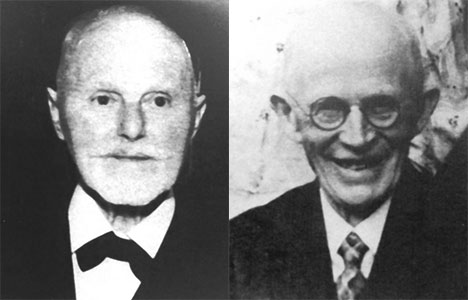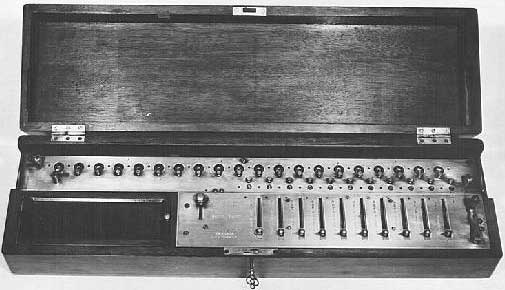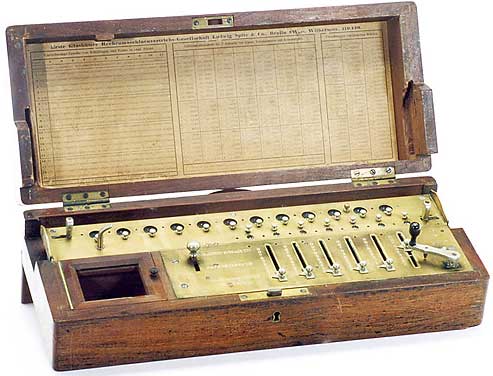Saxonia Calculating Machine History
Saxonia was among the first mechanical calculator invented by three Mechanics working in the factory of Arthur Burkhardt in Glashütte. In 1895, the three inventors Eduard Zeibig (1856-1944), Eugene Straßberger (1857-1945), who started the factory with Curt Dietzschold in 1878, and Josef Schumann (who was a foreman in the factory), decided to start a new factory called Glashütter Rechenmaschinen-Fabrik Saxonia. This was the company that gave rise to the successful calculating machine Saxonia.

In 1912, Schumann left the company, but the remaining founders, Zeibig and Straßberger, stuck together to continue the company’s operations. Later on, in 1920, the Saxonia and Burkhardt factories joined forces and formed the United Glashütte Rechenmaschinenfabriken Company. Saxonia calculating machine was made of wood and brass. The company’s first production models were almost identical to Burkhardt’s Arithmometer.


Afterwards, the product design changed as the company made significant improvements on the Saxonia calculating machine. The new models had a rotary setting lever by which a dust-tight encapsulation mechanism was possible to keep the Machine free of dust. It also had a moment cancellation mechanism and a rolling box lid. Additionally, unlike the traditional sliders of stepped-drum machines, Saxonia calculators had a keyboard to help users enter characters quickly.
Saxonia calculating machine was a device used in addition and multiplication of numbers. It had a movable accumulator enabling the calculator to perform complex multiplication and divisions effectively. Furthermore, it was fast and reliable because it could directly give addition and subtraction results. Saxonia calculating machine was widely used from 1895 to 1914 and has manufactured and sold over 12,000 calculators. Despite its remarkable achievements, the company became bankrupt in 1929.

Saxonia calculating machine: How It Worked
The Saxonia calculator has eight crucial parts needed for any calculation. These parts include totalizer, clearing totalizer, counter, clearing counter, carriage, reversing lever, setting cursors, and a crank. The setting cursors are six, used to enter the numbers for calculation. The figures are shown on the totalizer once you rotate the crank. The counter shows the number of rotations you make using the crank. The reversing lever is used to change your operations from addition to subtraction. Furthermore, the carriage is used in multiplication by showing the number “TIMES” you needed to rotate the crank. Finally, the clearing totalizer and counter reset the cogs to zeros.
Let’s have an example of how you will add (239 + 475) using the Saxonia calculator. Now, counting from the right, go to the third setting cursor and move it to 2, move the next-right cursor to 3, then shift the first cursor on the right to 9. After selecting the numbers, rotate the crank for the figures to reflect on the totalizer. Once done, ensure the reversing lever is set in addition before choosing the following numbers. Again, move the third setting cursor from the right to 4, select 7 on the next-right cursor, and move the first-right cursor to 5. Finally, spin the crank and check the results on the totalizer.
Follow the same procedure to work on subtraction operation and don’t forget to shift the reversing lever to the correct setting.
Saxonia calculating machine: Historical Significance
Saxonia calculating machine was an improvement of the Leibzin calculators and was able to perform four basic mathematical functions accurately. It had the movable accumulator that made it possible to directly perform multiplications and divisions of large numbers without necessarily rotating the crank several times.
The Saxonia calculator was later developed with a keyboard, which made it easy for users to enter characters and perform tasks quickly. Thanks to the inspiration from the early inventions like the Saxonia calculator, modern calculators come into reality.